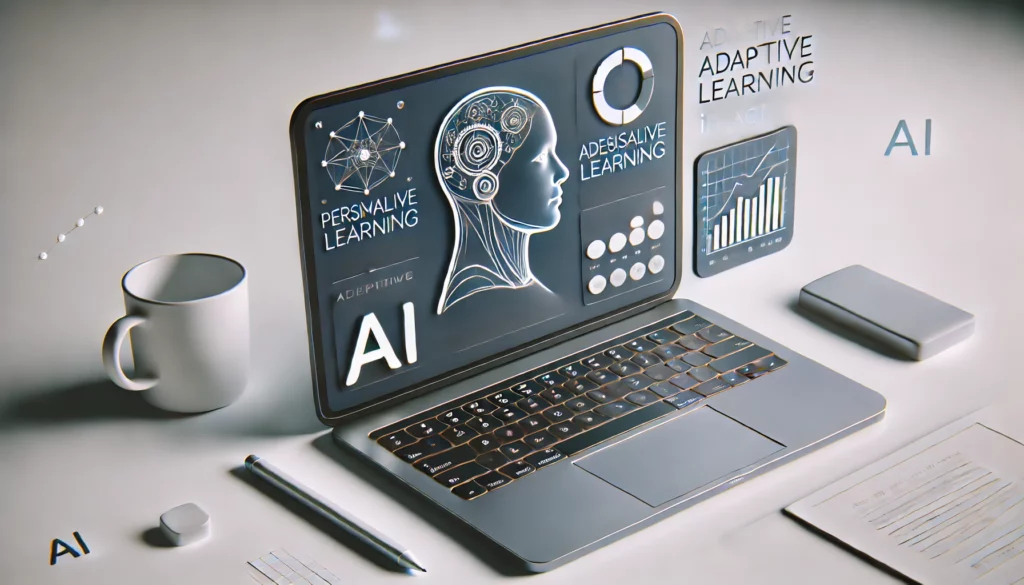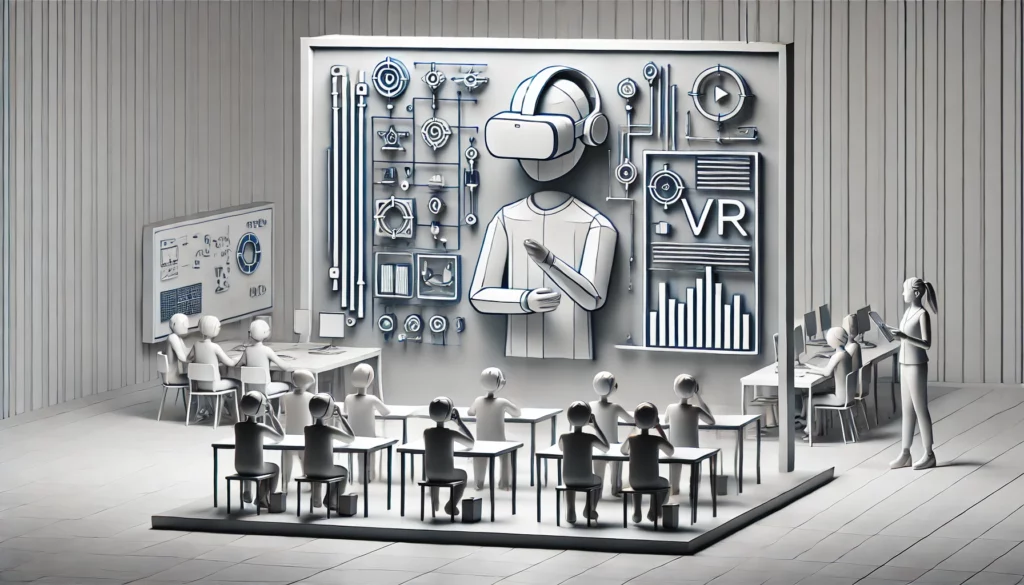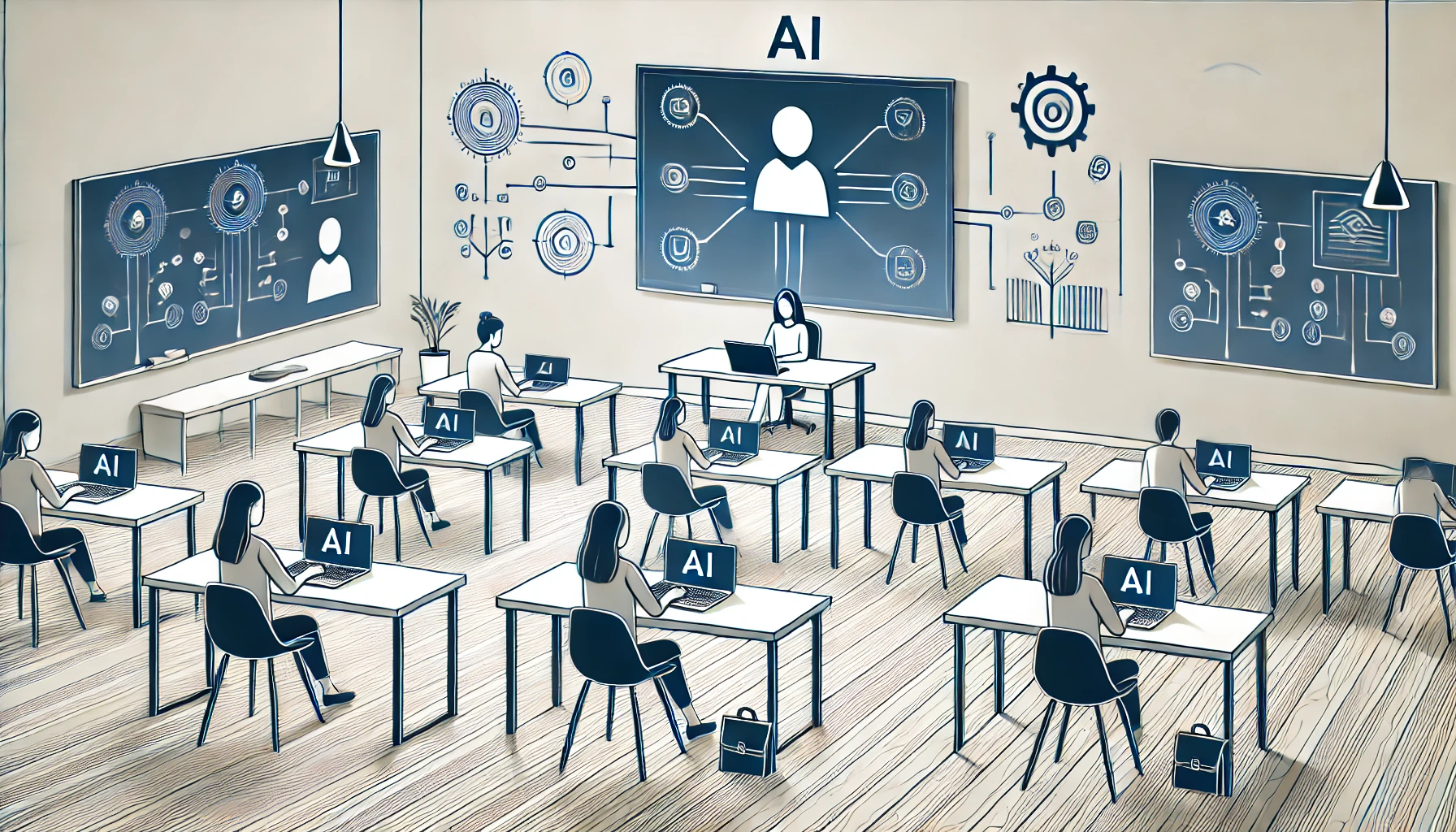Introduction
Education has always been a dynamic field, continually evolving to meet the needs of society. Today, we are witnessing a revolutionary shift driven by artificial intelligence (AI), particularly through the implementation of adaptive learning systems. These AI-powered systems promise to personalize education, making learning more efficient and engaging for students of all backgrounds. This article delves into the intricate ways AI is transforming adaptive learning, the benefits it brings, the challenges it faces, and the future it promises for education.
Understanding Adaptive Learning Systems
Adaptive learning systems are educational technologies designed to tailor learning experiences to the individual needs of students. Unlike traditional one-size-fits-all approaches, these systems use algorithms to analyze students’ performance in real-time and adjust the instructional content accordingly. This personalization aims to optimize the learning process by addressing each student’s unique strengths and weaknesses.
Historically, adaptive learning systems have existed in various forms, but their effectiveness was limited by the technology of the time. Early iterations relied heavily on predefined pathways and static decision trees. However, with the advent of AI and machine learning, these systems have become far more sophisticated. Modern adaptive learning systems can now dynamically adjust not only the content but also the delivery method and pacing, creating a more responsive and engaging learning environment (MDPI) (MDPI).
Key features of adaptive learning systems include real-time feedback, personalized learning paths, and data-driven insights. These systems continuously collect and analyze data on student interactions, providing educators with valuable information to further refine and improve the educational experience (MDPI).
The Role of AI in Adaptive Learning
AI plays a crucial role in enhancing the capabilities of adaptive learning systems. By integrating AI, these systems can leverage advanced technologies such as machine learning, natural language processing, and neural networks to create highly personalized learning experiences.

Machine learning algorithms enable adaptive learning systems to predict students’ future performance and identify the most effective instructional strategies. For example, if a student struggles with a particular concept, the system can provide additional resources or alternative explanations to help the student grasp the material. Natural language processing allows these systems to understand and respond to students’ queries in real-time, making the learning process more interactive and intuitive (World Economic Forum) (TODAY).
Real-world applications of AI-powered adaptive learning systems are already making significant impacts. Platforms like DreamBox and Knewton use AI to customize math and science lessons based on individual student performance. These systems have shown to improve student engagement and achievement by providing tailored support that traditional teaching methods often cannot offer (MDPI) (World Economic Forum).
Benefits of AI-Powered Adaptive Learning Systems
The integration of AI in adaptive learning systems offers numerous benefits, primarily centered around personalization, efficiency, and accessibility. Personalized learning experiences ensure that each student receives instruction that is specifically suited to their learning style and pace. This approach not only helps students understand the material better but also keeps them motivated and engaged.
Efficiency is another significant benefit. AI can automate many aspects of the learning process, such as grading and administrative tasks, allowing teachers to focus more on providing direct support to students. This automation reduces the workload for educators, giving them more time to develop innovative lesson plans and engage in professional development (MDPI) (TODAY).
Furthermore, AI-powered adaptive learning systems enhance accessibility by providing educational opportunities to a broader range of students. These systems can accommodate diverse learning needs, including those of students with disabilities or those who require alternative learning approaches. By making education more inclusive, AI helps bridge the gap between different learner groups and ensures that everyone has the chance to succeed (MDPI) (World Economic Forum).
Challenges and Considerations
Despite the promising benefits, the integration of AI in adaptive learning systems is not without challenges. One of the primary concerns is data privacy. These systems rely on vast amounts of student data to function effectively, raising questions about how this data is collected, stored, and used. Ensuring the security and privacy of student information is crucial to gaining the trust of both students and educators (MDPI) (World Economic Forum).
Another significant challenge is the cost of implementation. Developing and maintaining AI-powered adaptive learning systems can be expensive, potentially putting them out of reach for many educational institutions. This financial barrier could exacerbate existing inequalities in the education system, where only well-funded schools can afford the latest technologies (TODAY).
Additionally, there is the issue of adaptation. Both teachers and students need time to adjust to new technologies. Teachers must be adequately trained to use these systems effectively, while students must become comfortable with a new mode of learning. Without proper training and support, the full potential of AI in education may not be realized (MDPI) (TODAY).
Future Prospects and Innovations
Looking ahead, the future of AI in adaptive learning systems is bright, with numerous exciting trends and innovations on the horizon. Emerging technologies such as augmented reality (AR) and virtual reality (VR) are expected to further enhance personalized learning experiences by providing immersive and interactive educational environments (World Economic Forum).

Moreover, advancements in AI are likely to lead to even more sophisticated adaptive learning systems. These systems will be capable of not only personalizing content but also predicting future learning needs and providing proactive support. For instance, AI could identify potential learning gaps before they become problematic, allowing educators to intervene early and effectively (MDPI) (TODAY).
The long-term impact of AI on education will likely be profound. As these technologies continue to evolve, they will reshape the way we approach teaching and learning. One of the most promising developments is the use of AI to facilitate competency-based education (CBE). Unlike traditional education models that focus on time spent in class, CBE emphasizes the mastery of skills and knowledge. AI can tailor educational pathways to ensure that students achieve proficiency in their specific areas of interest, aligning educational outcomes with the demands of the job market (TODAY).
Emerging technologies such as augmented reality (AR) and virtual reality (VR) are expected to further enhance personalized learning experiences. These immersive technologies can create interactive educational environments that make learning more engaging and effective. For example, medical students could practice surgeries in a virtual environment, or history students could explore ancient civilizations through AR (World Economic Forum).
Moreover, advancements in AI are likely to lead to even more sophisticated adaptive learning systems. These systems will be capable of not only personalizing content but also predicting future learning needs and providing proactive support. For instance, AI could identify potential learning gaps before they become problematic, allowing educators to intervene early and effectively. This predictive capability will be instrumental in creating a more responsive and supportive educational environment (MDPI) (TODAY).
The long-term impact of AI on education will likely be profound. As these technologies continue to evolve, they will reshape the way we approach teaching and learning. AI-driven tools will provide educators with deeper insights into student performance and engagement, enabling them to create more effective and personalized learning experiences. The potential for AI to revolutionize education is immense, offering new possibilities for enhancing learning outcomes and preparing students for the challenges of the future (MDPI) (World Economic Forum).
Conclusion
In conclusion, the integration of AI into adaptive learning systems represents a significant advancement in the field of education. These technologies offer numerous benefits, including personalized learning experiences, increased efficiency, and enhanced accessibility. However, challenges such as data privacy, implementation costs, and the need for adaptation must be carefully managed to fully realize the potential of AI in education.
Looking to the future, the continued development of AI-powered adaptive learning systems promises to further transform education. Innovations such as augmented reality, virtual reality, and competency-based education will create more engaging and effective learning environments. As we embrace these technologies, it is essential to ensure that they are implemented ethically and equitably, providing all students with the opportunity to succeed.
The future of education is undoubtedly intertwined with the advancements in AI. By leveraging these technologies, we can create a more personalized, efficient, and accessible educational system that prepares students for the challenges of tomorrow. It is an exciting time for educators, students, and policymakers as we navigate the possibilities that AI presents in shaping the future of learning.
FAQs on AI-Powered Adaptive Learning Systems
1. What are the main benefits of AI-powered adaptive learning systems?
AI-powered adaptive learning systems offer several key benefits:
- Personalization: These systems tailor the learning experience to each student’s needs, adapting content, pace, and instructional strategies based on individual performance and preferences (MDPI) (World Economic Forum).
- Efficiency: AI can automate routine tasks such as grading and administrative work, freeing up teachers to focus on more impactful activities like mentoring and lesson planning (MDPI) (World Economic Forum).
- Accessibility: Adaptive learning systems can accommodate diverse learning styles and needs, making education more inclusive for students with different abilities and backgrounds (MDPI) (World Economic Forum).
2. How does AI in adaptive learning systems ensure data privacy and security?
Ensuring data privacy and security in AI-powered adaptive learning systems involves several strategies:
- Data Encryption: Encrypting data during storage and transmission to protect it from unauthorized access.
- Anonymization: Removing personally identifiable information (PII) from datasets to prevent tracing data back to individual students.
- Compliance with Regulations: Adhering to legal standards and guidelines such as GDPR (General Data Protection Regulation) and FERPA (Family Educational Rights and Privacy Act) to ensure data is handled responsibly (MDPI) (MDPI).
- Access Controls: Implementing robust access controls to ensure that only authorized personnel can access sensitive data (World Economic Forum) (TODAY).
3. What challenges do schools face when implementing AI-powered adaptive learning systems?
Schools encounter several challenges when implementing these systems:
- Cost: The development and maintenance of AI-powered systems can be expensive, making them inaccessible to underfunded schools (TODAY).
- Teacher Training: Teachers need adequate training to effectively use these technologies, which can require significant time and resources (MDPI) (TODAY).
- Infrastructure: Adequate technological infrastructure is necessary to support AI systems, which may not be available in all educational institutions (World Economic Forum).
4. What is the future outlook for AI in adaptive learning?
The future of AI in adaptive learning looks promising, with several emerging trends and innovations:
- Enhanced Personalization: Future systems will likely offer even more precise personalization, predicting students’ needs and providing proactive support (MDPI) (TODAY).
- Immersive Technologies: The integration of augmented reality (AR) and virtual reality (VR) will create more engaging and interactive learning environments (World Economic Forum).
- Competency-Based Education: AI will facilitate competency-based education by aligning learning pathways with real-world job requirements, ensuring students acquire relevant skills (TODAY).
- Ethical and Equitable Implementation: Ongoing advancements will focus on ethical considerations, ensuring that AI technologies are implemented in a fair and inclusive manner (MDPI) (TODAY).
